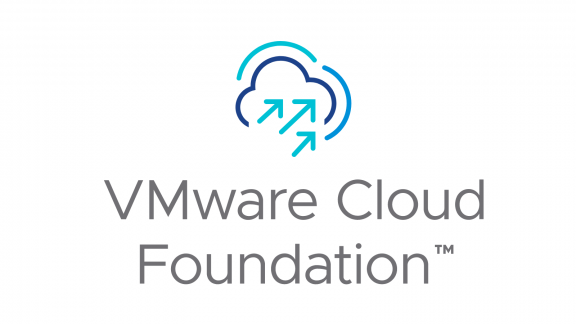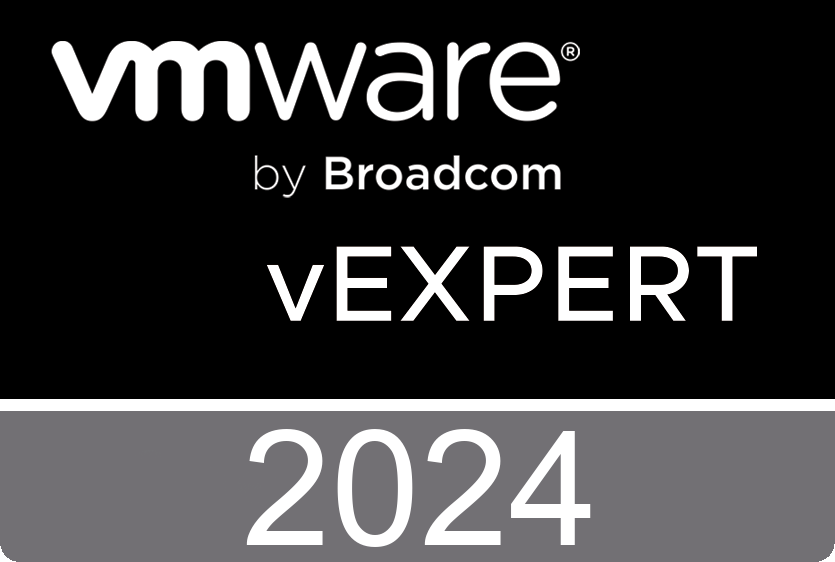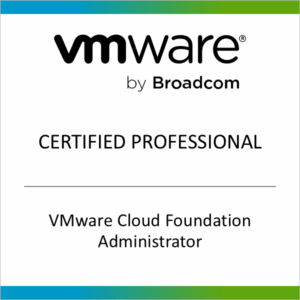
Deep Notes About VMware Cloud Foundation (VCF)
VMware Cloud Foundation (VCF) is a robust hybrid cloud platform designed to unify compute, storage, networking, and management into a single, seamless framework. It provides the foundation for modern enterprise workloads across private and public cloud environments. In this post, we dive deep into the architecture, components, lifecycle management, deployment models, and other critical aspects of VCF.
Core Components
- Workload Domain: Logical units of infrastructure that group ESXi hosts managed by a vCenter Server instance. There are two types:
- Management Domain: Contains management components like vCenter Server, NSX Manager, and SDDC Manager.
- VI Workload Domains: Used for customer workloads and can include vSAN, NFS, or VMFS storage.
- SDDC Manager: The central management tool for VMware Cloud Foundation. It automates the deployment, configuration, and lifecycle management of the software-defined data center (SDDC) components.
- Cloud Builder: A tool used during the initial deployment of VMware Cloud Foundation. It automates the bring-up process, including deploying the management domain.
Key Features
- vSphere: Provides compute virtualization.
- vSAN: Offers storage virtualization.
- NSX: Enables network virtualization and security.
- Aria Suite: Formerly vRealize Suite, it includes tools for monitoring, automation, and analytics.
Additional Concepts
- Tanzu Kubernetes Grid: Integrated with VCF for container orchestration.
- Lifecycle Management: Automated updates and patching for all components.
- Architecture Models: Standard and consolidated models for deployment.
Tips
- VMware Cloud Foundation (VCF) indeed follows a similar logical separation. Here’s a breakdown:
- Management Domain: This is comparable to the traditional management cluster. It houses all infrastructure components critical for managing the environment, like:
- vCenter Server
- NSX Manager
- SDDC Manager
- Other essential management components.
- VI Workload Domain: This aligns with the concept of production clusters. VI (Virtual Infrastructure) Workload Domains are created for running customer workloads. These domains leverage ESXi hosts for compute, vSAN or other storage types for data, and NSX for networking.
Both domains have their own ESXi hosts, network configurations, and storage settings, and they serve distinct purposes. Management domains handle administrative functions, whereas workload domains are dedicated to application and workload hosting.
What makes VCF even more powerful is how it automates and simplifies the lifecycle management of these domains. If you’d like, we can dive deeper into any specific feature or configuration within the workload domain!
- VMware provides the SDDC Manager appliance for manual deployment to offer flexibility in certain scenarios. While the typical deployment process involves automation through Cloud Builder, manual deployment of the appliance can be useful for:
- Custom Configurations: In cases where organizations have unique requirements or constraints that don’t align with the automated deployment process.
- Recovery Scenarios: If the SDDC Manager needs to be redeployed due to issues or failures in the environment.
- Dark Sites: For environments without internet access, manual deployment allows administrators to configure the appliance offline.
- Testing and Development: It can be used in lab environments to test configurations or troubleshoot specific issues.
However, even with manual deployment, the appliance is designed to integrate with the VMware Cloud Foundation stack, including NSX and vSAN, for full functionality
- SDDC Manager is indeed the central management component in VMware Cloud Foundation (VCF). It handles tasks like updates, patching, and lifecycle management for the entire environment. Here’s a clearer breakdown:
- Deployment Role: During the initial deployment of VCF, Cloud Builder is used to automate the bring-up process, including deploying the SDDC Manager appliance. Once deployed, SDDC Manager takes over for ongoing management tasks.
- Post-Deployment Management: After the VCF environment is up and running, SDDC Manager is responsible for:
- Lifecycle Management: Automating updates and patches for vSphere, vSAN, NSX, and other components.
- Workload Domain Management: Creating, expanding, and managing workload domains.
- Monitoring and Troubleshooting: Providing insights into the health and performance of the environment.
- Password and Certificate Management: Ensuring security across the infrastructure.
So, while Cloud Builder is crucial for the initial setup, SDDC Manager becomes the backbone for managing the environment afterward.
- Cloud Builder is primarily used for the initial deployment of VMware Cloud Foundation (VCF). It automates the bring-up process, including deploying the management domain and the SDDC Manager appliance. Once the environment is up and running, SDDC Manager takes over as the central tool for managing the lifecycle of the VCF components, such as updates, patching, and workload domain management.
After the initial deployment, Cloud Builder is generally not used again unless you’re setting up a new VCF environment or performing specific recovery tasks. The ongoing management and operations are handled entirely by SDDC Manager.
- Manager and Aria Operations differ (Monitoring):
- SDDC Manager:
- Primarily focuses on updates, deployment processes, and lifecycle management of VMware Cloud Foundation components.
- Provides an overview of the status of tasks initiated through it, such as deployment or upgrade processes. For example, when deploying a workload domain or applying an update, you can monitor the progress and health of these activities directly in SDDC Manager.
- Ensures that infrastructure components (vSphere, vSAN, NSX, etc.) are kept in a consistent state during lifecycle operations.
- Aria Operations:
- Offers live monitoring and performance metrics with detailed analytics, making it invaluable for day-to-day operational health checks.
- Provides insights into resource utilization, capacity planning, and performance troubleshooting for both virtual machines and physical infrastructure.
- Enables proactive management by identifying trends and potential issues before they impact the environment.
To sum up, SDDC Manager oversees infrastructure lifecycle tasks and monitors their progress, while Aria Operations provides in-depth metrics and real-time performance monitoring, ensuring your environment stays healthy and efficient.
- During the initial deployment using Cloud Builder, the focus is on setting up the management domain and deploying core components like SDDC Manager. Aria Suite components (such as Aria Operations and Aria Automation) are not deployed at this stage.
Once the environment is operational, you can use SDDC Manager to deploy Aria Suite components. Here’s how it works:
- SDDC Manager Integration: SDDC Manager provides workflows to deploy Aria Suite components like Aria Operations, Aria Automation, and others. These workflows are integrated with Aria Suite Lifecycle Manager (formerly vRealize Suite Lifecycle Manager).
- Deployment Sources:
- Internet Source: If your environment has internet access, SDDC Manager can download the required software bundles directly from VMware’s repository.
- Local Installer: For environments without internet access (e.g., air-gapped or dark sites), you can manually download the Aria Suite Installer Bundle from VMware’s website and upload it to the SDDC Manager repository.
- Post-Deployment Configuration: After deployment, Aria Suite Lifecycle Manager is used to manage the lifecycle of these components, including updates, patches, and configurations.
This approach ensures that the deployment of Aria Suite components is flexible and aligns with your infrastructure’s connectivity and requirements.
- SDDC Manager in VMware Cloud Foundation does indeed leverage vSphere Lifecycle Manager (vLCM) for managing updates and patches to ESXi hosts. Here’s how it works:
- Integration with vLCM: SDDC Manager coordinates with vSphere Lifecycle Manager to apply updates and patches to ESXi hosts. vLCM provides the underlying mechanism for managing host images and ensuring consistency across clusters.
- SDDC Manager’s Role: While vLCM handles the technical aspects of updating ESXi hosts, SDDC Manager orchestrates the process. It ensures that updates are applied in a controlled manner, taking into account dependencies between components like vSAN and NSX.
- Lifecycle Management Scope: SDDC Manager oversees the lifecycle of all VMware Cloud Foundation components, including vSphere, vSAN, NSX, and Aria Suite components. For ESXi hosts specifically, it relies on vLCM for patching and updates.
- vSphere Lifecycle Manager (vLCM) is primarily used for updating ESXi hosts. For other components like vCenter, vSAN, NSX, and Aria Suite components, VMware Cloud Foundation employs different mechanisms:
Update Planner in SDDC Manager
- SDDC Manager includes an Update Planner feature, which is used to orchestrate updates and patches for components like vCenter, vSAN, and NSX. It ensures compatibility and proper sequencing during the update process.
- The Update Planner provides a pre-check mechanism to verify the health and readiness of components before applying updates. This helps avoid disruptions during the update process.
Aria Suite Lifecycle Manager
- For Aria Suite components (formerly vRealize Suite), updates and patches are managed through Aria Suite Lifecycle Manager. This tool is specifically designed to handle the lifecycle of Aria Operations, Aria Automation, and other related components.
- It provides workflows for updating, patching, and configuring these components, ensuring they remain integrated with the overall VMware Cloud Foundation environment.
Lifecycle Management in VMware Cloud Foundation
- SDDC Manager acts as the central orchestrator for lifecycle management across all components. It integrates with tools like vLCM and Aria Suite Lifecycle Manager to provide a unified update experience.
To summarize:
- vLCM: Updates ESXi hosts.
- Update Planner in SDDC Manager: Updates vCenter, vSAN, and NSX.
- Aria Suite Lifecycle Manager: Updates Aria Suite components.
- The Update Planner in SDDC Manager orchestrates the entire update process by ensuring that all dependencies and version compatibility checks are respected. It uses tools like vSphere Lifecycle Manager (vLCM) for ESXi updates and Aria Suite Lifecycle Manager for Aria Suite components, and it carefully sequences updates to avoid disruptions.
A typical update sequence might look like this:
- Aria Suite Components: Update components like Aria Operations and Aria Automation through Aria Suite Lifecycle Manager to ensure they align with the updated stack.
- vCenter Server: Update vCenter to match the expected version compatibility for NSX, vSAN, and ESXi.
- NSX: Update NSX Manager and Edge clusters to ensure compatibility with both vCenter and ESXi.
- vSAN: Update vSAN components to prepare for ESXi host updates.
- ESXi Hosts: Finally, update ESXi hosts using vSphere Lifecycle Manager, as this is dependent on all prior components being updated.
This sequence ensures a smooth and planned update process, minimizing the risk of incompatibility. Update Planner makes sure the right steps are followed based on your environment’s configuration and dependencies.
– let’s dive into the standard and consolidated deployment models in VMware Cloud Foundation (VCF):
1. Standard Architecture
- In this model, the management domain and workload domains are separate.
- The management domain is dedicated to running the infrastructure management components, such as vCenter, NSX Manager, and SDDC Manager.
- Workload domains are created separately for hosting customer workloads, ensuring clear separation between management and production environments.
- This model is ideal for large-scale environments or scenarios where scalability and flexibility are critical.
2. Consolidated Architecture
- In this model, the management domain and workload domains are combined into a single domain.
- Both management components and customer workloads run on the same set of ESXi hosts.
- This approach is typically used for small-scale environments or proof-of-concept deployments, where resource constraints make it impractical to separate the domains.
Key Differences
- Scalability: The standard model offers better scalability and flexibility for future expansion, while the consolidated model is limited in this regard.
- Resource Isolation: The standard model provides better isolation between management and workload resources, which is critical for production environments.
- Hardware Requirements: The consolidated model requires fewer resources, making it suitable for smaller setups.
It’s important to note that once you choose a deployment model during the initial setup with Cloud Builder, switching between these models later is not straightforward.


